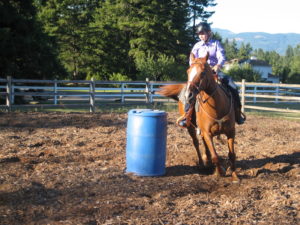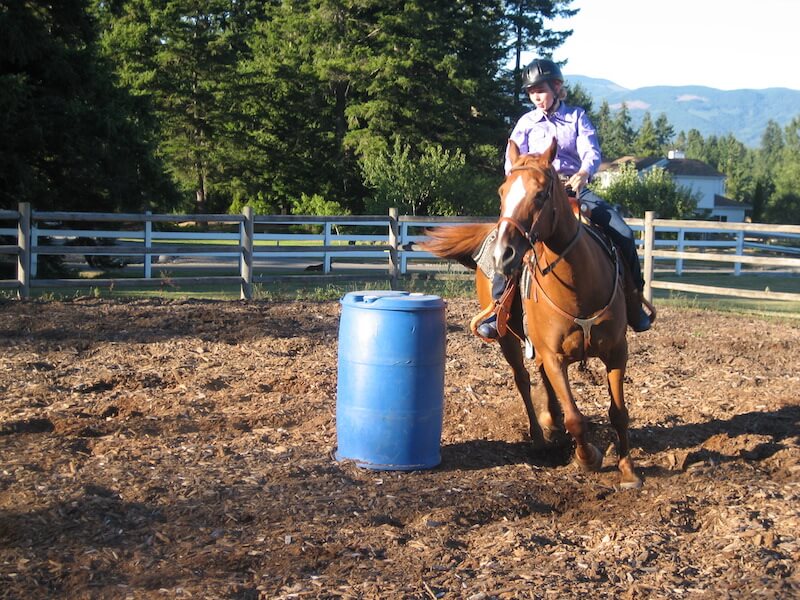How to Keep Your Aged Partner Happy and Comfortable
by R. Paul Schwab, DVM
Arthritis is painful inflammation and stiffness of the joints, which may be associated with degeneration of the joint surfaces from wear and tear, age, infection, or autoimmune disease. In this article we will concentrate on age-related, wear-and-tear arthritis. Just like us, a horse’s job as a high performance competitor will eventually decrease as age-related changes to the bones, cartilage, and supporting soft tissue set in. Signs of arthritis include stiffness, poor performance, and swelling with pain or heat at one or more joints. Poor conformation of the animal, especially in the limbs, is a major reason for degenerative arthritis. For example, horses with sickle hocks, or hocks set to the point where the canon bone angles under the horse instead of straight up and down, are at a higher risk of hock arthritis because of the extra strain on the back portion of the joint. Poor hoof conformation can also put strain on the fetlock, pastern, and coffin joints.
Horses tend to live longer now because of improvements and advances in nutrition, parasite control, and equine dentistry. This means there may be a large population of horses that are not in their prime, but have plenty of time to have a useful career as a trail, pleasure, or teaching horse. Often these horses end up in a pasture or small paddock and get exercised very little. Our natural instinct when we see these horses start to get stiff or sore is to retire them to a life of standing around a lot “resting.”
There are a limitless supply of products designed to help with pain and joint damage that can be an easy, although expensive, way to try to control symptoms associated with arthritis. Though such products might be a good idea for an aged horse, controlled regular exercise continues to be a most effective (and certainly inexpensive) method of controlling arthritis pain. In the short term, arthritis can be treated with anti-inflammatory medications such as phenylbutazone or firocoxib. Joints can also be injected with corticosteroids and hyaluronic acid. These are effective short-term treatments, but have side effects that must be considered.

In the long term, exercise is a proven tool for arthritis management. It not only increases the strength and flexibility of the joint, but it can control pain and combat fatigue. In a 2013 JAVMA article, exercise was associated with a decrease in severity of lameness in dogs with hip dysplasia, a painful arthritic condition of the hips. Joints need stability provided by strong supporting muscles and ligaments. Also, cartilage has minimal if any blood supply. The compression and relaxation of the cartilage that occurs with exercise can pump joint fluid in and out of the cartilage continually flushing the cartilage with fresh fluid. For some horses, the biggest benefit of exercise is that it helps keep the weight off. Increased weight means more stress on the joints and less drive for the horse to want to move around.
Because every horse’s situation is different, you should talk to your veterinarian about your horse and how much and what kind of exercise is appropriate. Also, monitor your horse as you increase its level of activity. Watch for heat, pain, or swelling after exercise, as these are signs that you may need to back off a bit. Horses were bred to do a job whether it be roping calves, jumping fences, or pulling a wagon and most seem to enjoy continuing to do something for their owners. Help them be happy, healthy, and pain free by keeping them in some sort of activity.
Published November 2013 Issue

The Northwest Horse Source is an independently owned and operated print and online magazine for horse owners and enthusiasts of all breeds and disciplines in the Pacific Northwest. Our contemporary editorial columns are predominantly written by experts in the region, covering the care, training, keeping and enjoyment of horses, with an eye to the specific concerns in our region.






